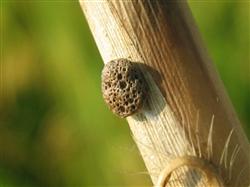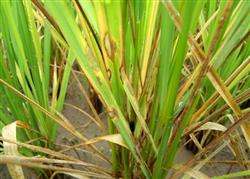How to control rice sheath blight?

What is the harm of rice sheath blight? How to control rice sheath blight? Netizens are also asked to help introduce the harm of rice sheath blight into leaf sheath disease, leaf disease and stem disease, which are described in detail as follows. Leaf sheath infection: dark green water-immersed edge blurred spots appear near the water surface, and then gradually expand in oval or moire shape, gray-green or grayish brown in the middle, yellowish or grayish white in the middle when the humidity is low, translucent tissue destruction in the middle, and dark brown on the edge. When the disease is serious, several disease spots fuse to form large disease spots, showing irregular moire spots, which often lead to leaf yellowing and death. Leaf symptoms: the disease spot is moire-like, the edge fades yellow, and when the disease occurs quickly, the disease spot is dark green and the leaves rot quickly. Stem damage: the first dark green, and then turn grayish brown, often can not heading, heading of more blighted grain. Humidity disease long white reticular hyphae, and then converge into white mycelia and form a sclerotia, sclerotia dark brown, easy to fall off. Under the condition of high temperature, a layer of white powder mildew is produced on the disease spot. The main factor of rice sheath blight: the main factor of high temperature and humidity, the temperature is 18 ℃ and 34 ℃, and 22 Mel 28 ℃ is the most suitable. The relative humidity of the disease is more than 70%, 96%, 90% and above. Long-term deep irrigation, partial application of nitrogen fertilizer, late application of nitrogen fertilizer, rice canopy closure and overgrowth promote the occurrence and spread of sheath blight. The control methods of rice sheath blight are as follows: first, strengthen cultivation management, apply sufficient base fertilizer, apply topdressing early, not partial application of nitrogen fertilizer, and increase the application of phosphorus and potassium fertilizer. By using the technology of formula fertilization, rice is not covered with leaves in the early stage, does not grow only in the middle stage, and is not greedy in the later stage. Irrigation to achieve shallow water tillering, enough seedlings to open the field. Dry the field to promote the root, fertile field heavy sun, thin field light sun, wet long ear, do not cut off water in advance, prevent premature senescence, it is necessary to grasp the principle of "shallow before, in the sun, and moist after". Method 2. Use chemical spray to control: 1. 2.5% Jinggangmycin 100ml. Usage: spray 50 kg of water or pour 400 kg of water. 2, 20% trimethoprim EC 50-76 ml; 3, 50% methyl thiophanate wettable powder 100g; 4, 50% carbendazim wettable powder 100g; 5, 30% carbendazim wettable powder 50m 75g; 6, 50% methyl rikurin (Like) wettable powder 200g. Dosage: 50kg per 667 grams of liquid medicine. Click to get more rice planting techniques click to get more food crop planting techniques
- Prev

How to control rice sheath blight?
How to control rice sheath blight? When will the detailed control of rice sheath blight begin? Please help guide the harm of rice sheath blight to rice is very serious, the best control method is to prepare to plant rice from the beginning, the following is a detailed description of the control methods and reasons for netizens.
- Next

What is rice sheath blight?
What is rice sheath blight? What are the hazards of rice sheath blight? Also ask friends to help introduce the harm of rice sheath blight: Rice sheath blight is also known as moire disease. The disease can occur from seedling stage to panicle stage. Leaf sheath infection produces dark green water-immersed edge blurred spots near the surface, and then gradually expands into an oval or cloud.
Related
- The first cup of black tea in spring, the flavor and history of tea gardens in Kenya, Africa
- The computer can not only choose potatoes, but also grow tea rice. AI will grow winter oolong tea champion.
- It is not only the inflated tea bitten by insects, but also engraved with the four seasons tea in Beipu.
- The Oriental Beauty Tea Festival in Zhuxian County takes the stage at the weekend to experience the plus-size feast of oil tea.
- & quot; Oriental Beauty Tea & Exploration of Emei in Hsinchu, the hometown of quot;
- The new variety of strawberry "Tainong 1" dessert is the first choice with mellow aroma. Crimson gorgeous
- History of Tea in Taiwan: from Wild Inner Mountain to Export Tea Garden
- Two types of Taiwan Oriental Beauty Black Tea won the British three-Star Award for Childhood Tea Xiang Zhang Jiaqi changed from pilot to champion tea maker.
- Banana species and varieties: the planting history of Taiwan Xianren banana and dwarf banana is long, is banana disease resistant?
- Coffee planting Technology: Qianjie Coffee from Seedling to harvesting

